RINGGOLD, Ga. — Ten years ago, one of the most violent, prolific "Super Outbreaks" in U.S. history spawned 362 tornadoes over several days and impacted over two dozen states. In Georgia, there were 15 confirmed tornadoes between April 27, 2011 and the early morning hours of April 28, 2011.
The strongest tornado, Georgia's last EF-4 up until just last month, had winds up to 175 miles per hour in parts of Catoosa County in the far northwestern corner of the state.
11Alive's Melissa Nord visited the damage path in Ringgold earlier this month to talk with several long-time residents and community members who still have vivid flashbacks of that night 10 years ago.
This is the story of Ringgold.
The closet
Ruth Montgomery opened a remembrance box full of newspaper clippings, magazine articles, and books several times a year, all with images and words written about that day 10 years ago, April 27, 2011.
She pointed to one magazine article titled, "What Truly Matters" and showed the picture of her house just days after the tornado struck. In the picture, two-by-fours were everywhere. What was left of the house was unrecognizable, except for the one room left standing. It was her closet.
“We was behind that you see, everything else blown away except for this one section, and this is where we were.”

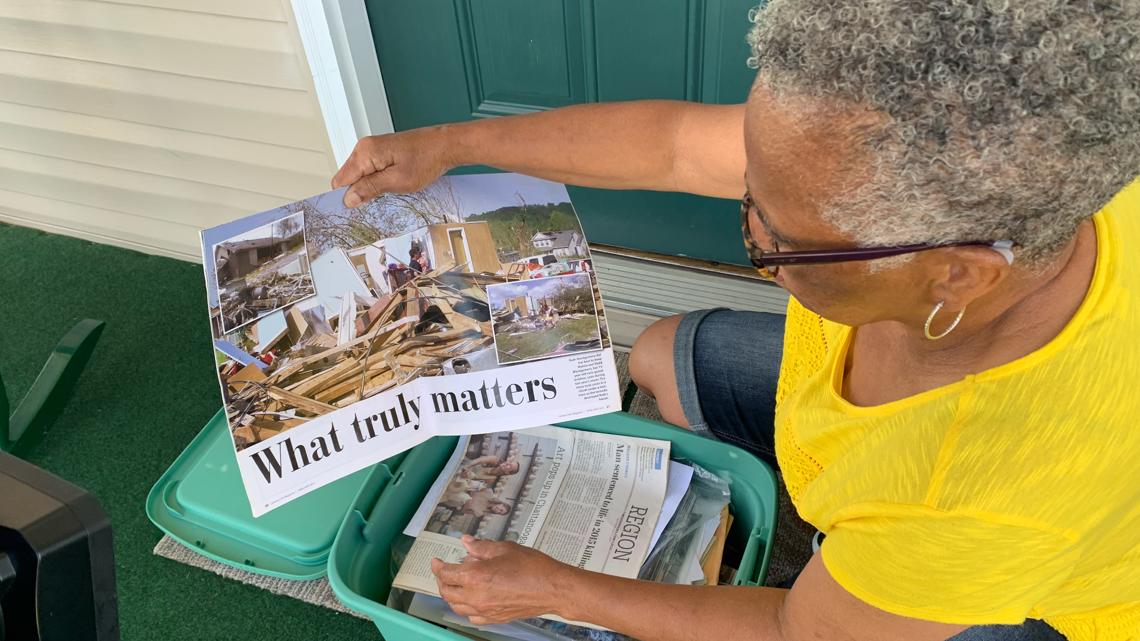
That closet housed Montgomery and two of her then teenage grandchildren, Maleia and Malik, when the twister tore through in the 8 p.m. hour that day.
“It was horrible. You know, when we came out of our closet and looked out, everything was gone. Everything. Trees, everything just laying in the streets, we didn’t know what to think.”


Her house on Sparks Street was the hardest hit area of downtown Ringgold. Although the damage in this part of Catoosa County was only estimated to be from an EF-2 tornado, her house was destroyed, along with her neighbors and her church, Peria Baptist, just a block down the road.
The hike to help
That night when the tornado struck, first responders and members of Ringgold's emergency response team jumped into action. They had been practicing drills just like this for the previous three years, and credit the drills to the swiftness of response.
Current Catoosa County Emergency Management Director Steve Quinn remembers the moments following in slow motion. Then, he was a battalion chief firefighter at Catoosa Station One in Ringgold and saw the wedge shaped tornado closing in.

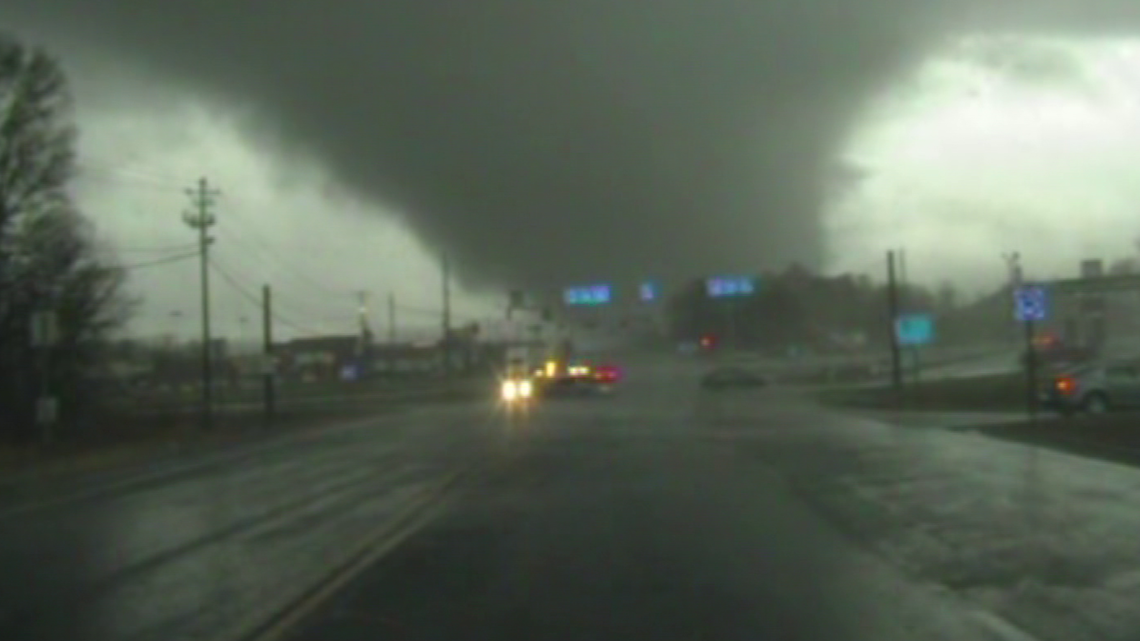
“When the tornado come over us, I got on the radio and said 'Catoosa, this is Battalion Three, we have a confirmed tornado, go ahead and start sending help.'"
Immediately following, Quinn and his team went into action. They could only make made it four blocks with their fire truck before downed trees and power lines blocked every road. To help—they had to hike. So they continued on foot.
Also on foot was City Councilmember Randall Franks. His house was just outside the damage path, but as he looked outside as the storm was nearing, he saw the hood of a vehicle, hovering about 100 feet in the air above his house. He ran into shelter, then once the storm passed jumped into action.
Franks was a volunteer member of the town's emergency response team. He went door to door, helping neighbors.
“I could’ve never imagined how surreal it was, to walk these streets, to go through these yards, every tree, every power pole down.”

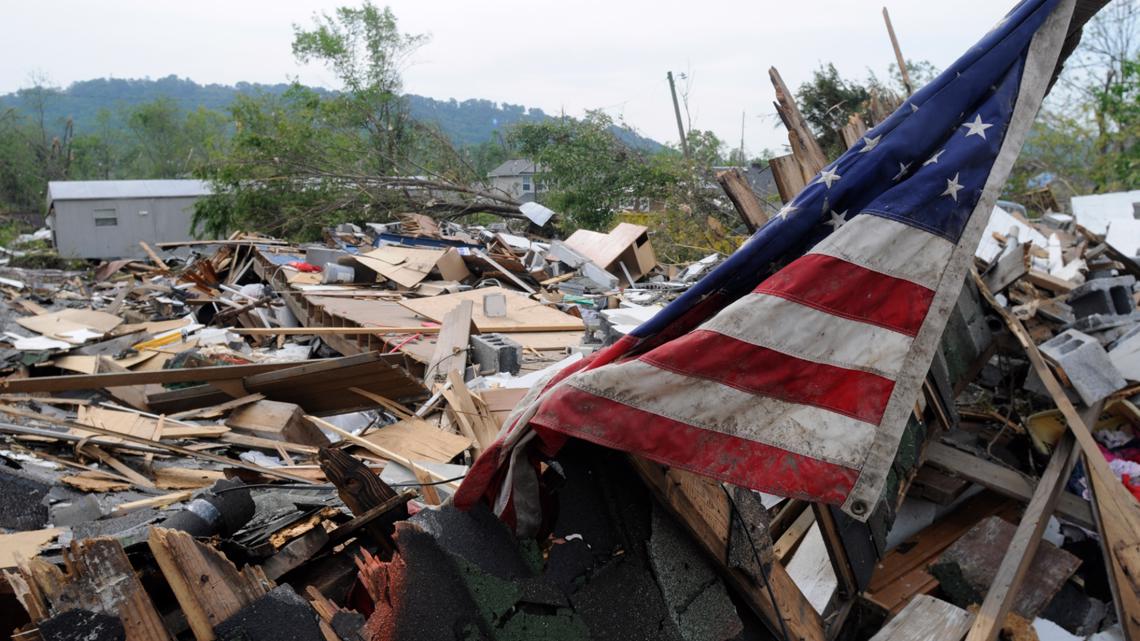
Storm survivors
In the downtown area, Randall Franks discovered the tornado's first victim. It was former city councilmember Rhea McClanahan. He was downtown in his home when the tornado hit.
As Franks, Quinn, and others helping with search and rescue it became apparent that it was a miracle that there were not other fatalities in both the downtown area and main business corridor. Right off the main interstate exit, hundreds of people had sheltered in fast food restaurants, gas stations and hotels. All of these buildings were badly damaged and many destroyed.

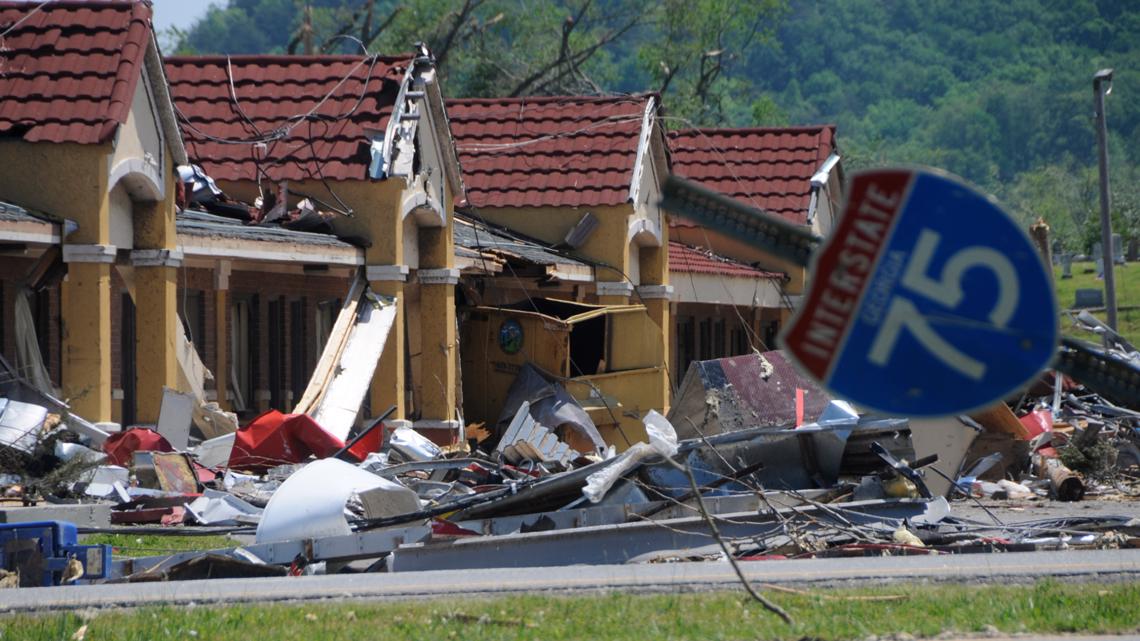
Franks recalled the damage
“If there was ever a time when God took his hand and put it -- over -- to protect people, it was right here. Because we were anticipating that there would be hundreds of fatalities along that corridor, because these restaurants were gone -- all of them. All that was still standing on some of them were the coolers.”

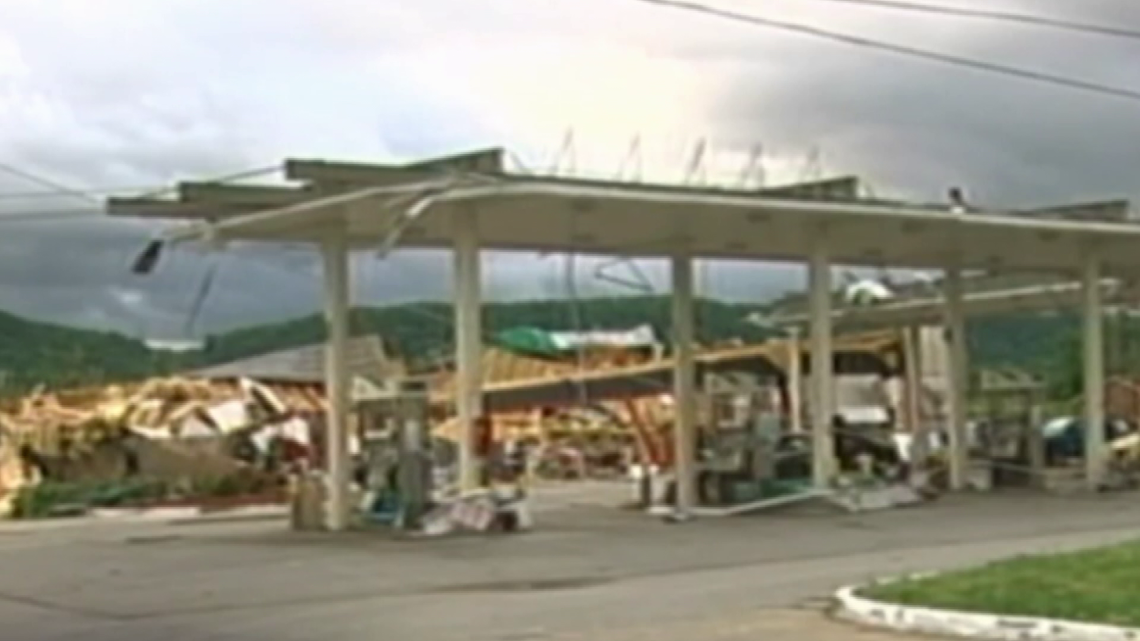
There were still numerous injuries that needed to be cared for, scrapes and wounds from flying debris. But they survived.
Unfortunately, Catoosa residents northeast of downtown Ringgold were not that fortunate.
The tornado strengthened as it passed east of the downtown area and into the Cherokee Valley community. The twister claimed claimed an additional seven lives there before crossing the state line into before reaching Tennessee.

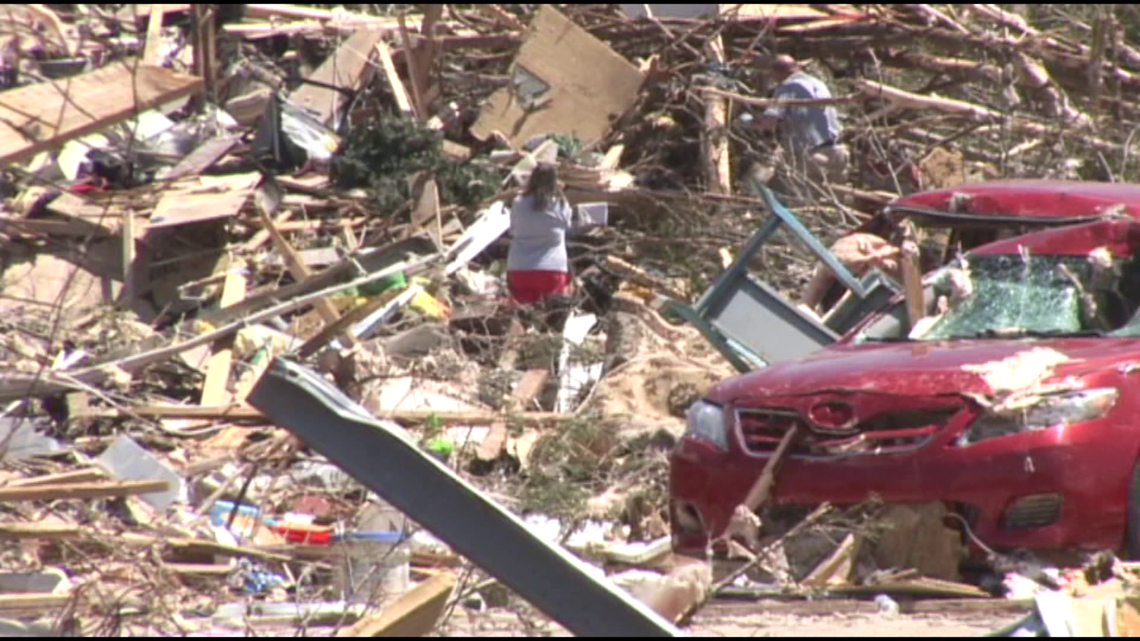
In the aftermath, Ringgold looked a war zone.
In the main damage path, buildings were unrecognizable. The tornado took trees and shredded them like a pencil sharpener, wrapped metal scraps around power poles like flimsy pieces of tin foil. In all, 4,500acres of timber were destroyed, and over 700 buildings were damaged or destroyed.
Ruth Montgomery's house was one of unsalvageable buildings,
"And everybody thought I should be mad. I said, 'no, I’m not mad.' And they said, 'why you not crying,' and I said, 'I’m alive! That’s why I’m not crying.'”

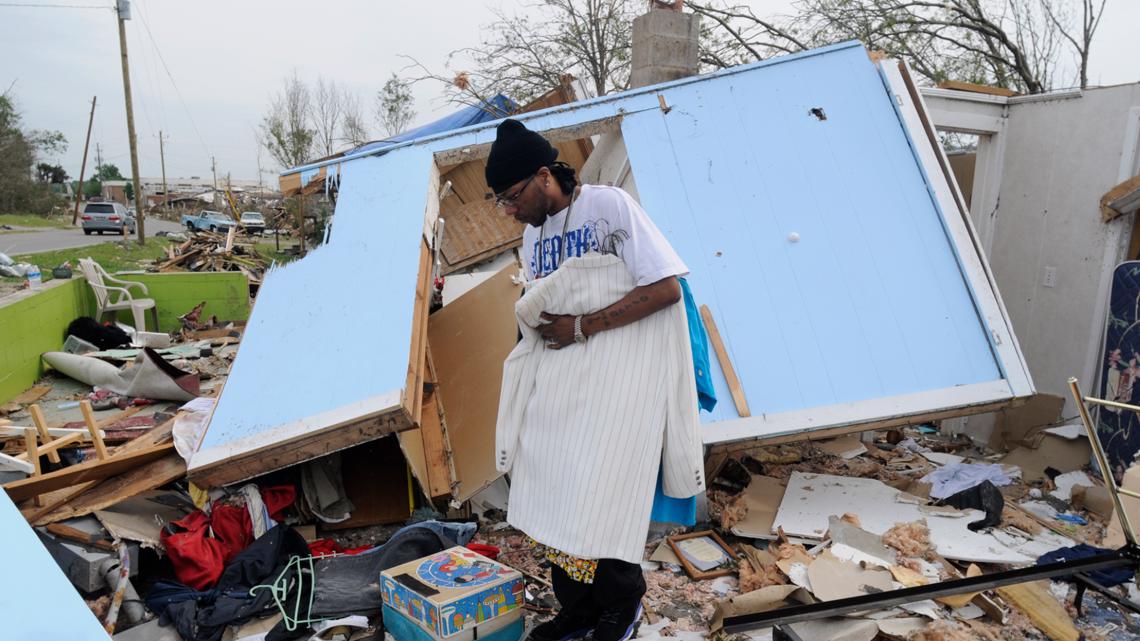
Montgomery was thankful. Her house may have been destroyed amongst other buildings and homes on her street. But building or not, it didn’t matter when Sunday rolled around. Her church got together and celebrated.
Untouched by the storm
Paul Croft, a deacon at Mt. Peria Baptist Church, remembers the Sunday following.
The church was destroyed. Miraculously, the Bible on the podium was left open, untouched by the storm's ferocity.
And a guitar on the alter near the bible was also left pristine. The church members rejoiced, thankful for their protection from the storm.
Croft recounted, “We really celebrated. We had all races and people from near and far. We were just blessed with that service at that time.”


A community effort
In the days and weeks following the tornado, the community came together. It was neighbors helping neighbors. There was a long cleanup process ahead, but it was a process they’d do together.
FEMA and GEMA, along with numerous other state and federal agencies, came to Catoosa county to assist.
For those residents without insurance and the means to rebuild, the community stepped in. The Catoosa Organization Acting in Disaster, or COAD, formed which included community churches, civic organizations, non-profits and business leaders. They raised over $500,000 to assist more than 160 families to find a new normal. Christian aid ministries, the Mennonites and Amish, all brought volunteers to help the city rebuild.
Honoring the lives lost
In total, the tornado took the lives of nine Catoosa county residents: 1 in the city of Ringgold, 7 in Cherokee Valley, and another Ringgold resident who crossed over the state border to Tennessee to ride out the storm where it eventually took his life.
Those nine individuals are remembered at this memorial at the Little General’s park.

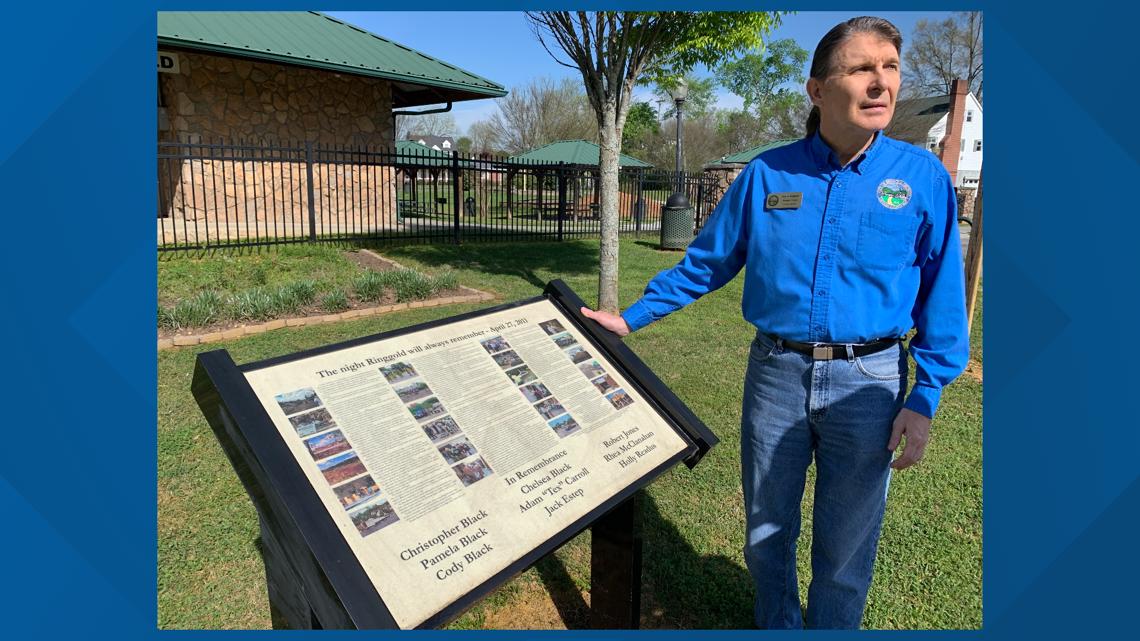
Although many businesses and homes were rebuilt, as after many disasters, some decided it was time to go. To this day, there are still several empty lots and concrete slabs littered throughout Ringgold, waiting for the next visionary to join the community.


15 other Georgia tornadoes
The EF-4 Catoosa County tornado was one of 15 in the state of Georgia between April 27th and April 28th.

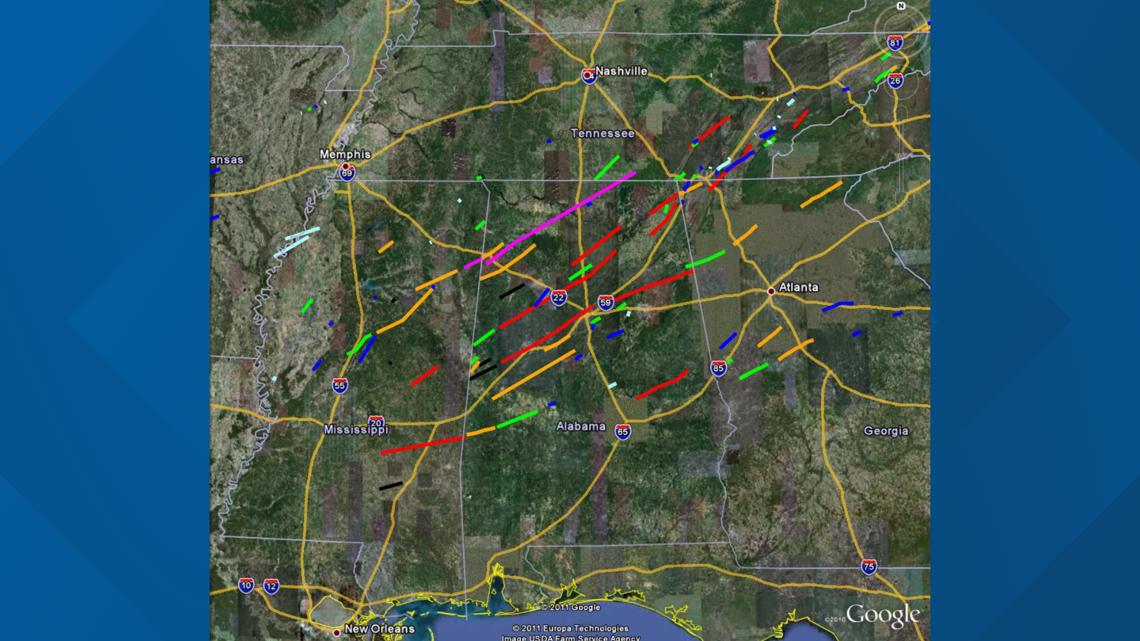
What stands out in the state with this outbreak is not just the total number of tornadoes, but the number of strong tornadoes. In addition to the EF-4, there were four additional EF-3 tornadoes with max winds between 140 and 150 miles per hour.

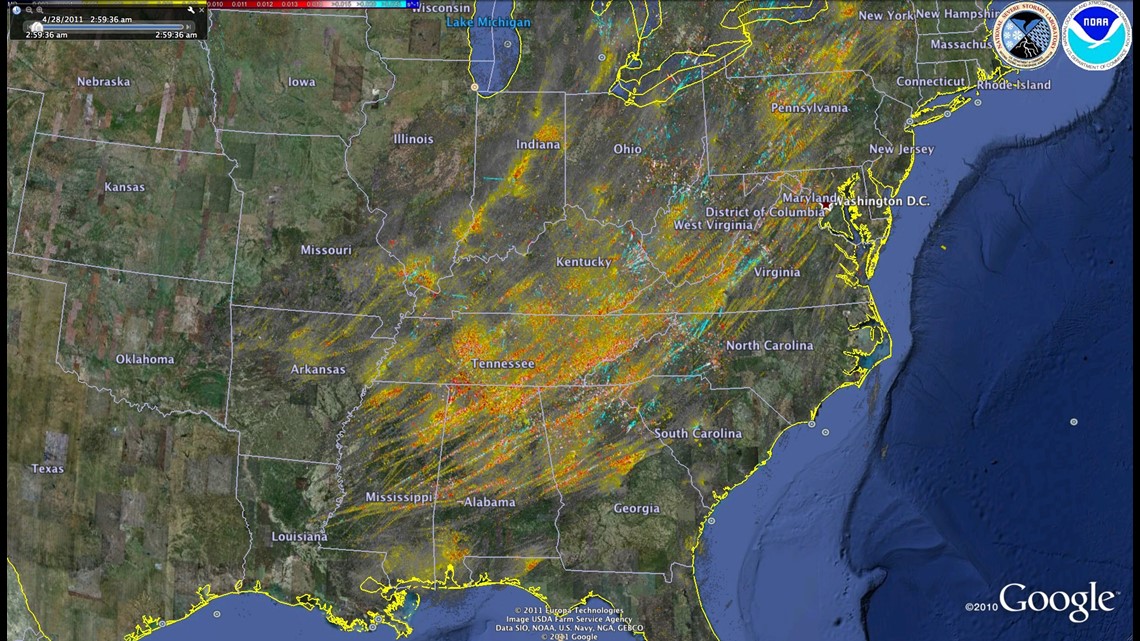
In total, 14 people in the state of Georgia lost their lives that day, and over 100 more were injured. In nearby states, the devastation was even worse.
Alabama was hardest hit with 240 lives lost and thousands injured.

